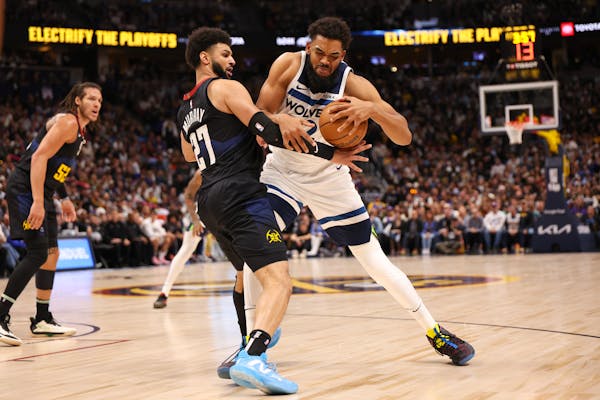Its $6 million cost pales in comparison to the $1 billion Minnesota Vikings stadium nearby, but a publicly financed pedestrian bridge at the Downtown East light-rail station is provoking protest from critics, who say the team should foot the bill.
"That seems like quite a bit of money for a relatively small bridge," said Streets.mn blogger Nick Magrino, who questioned the cost and the design on the urban issues blog.
But the bridge is "not just a Vikings issue, it's a safety issue," said team spokesman Lester Bagley, given the impending influx of office workers, residents and stadium-goers converging on the edge of downtown Minneapolis.
In April, the Metropolitan Council's Transportation Committee endorsed the bridge, which would span the light-rail tracks at the busy light-rail transit station, a key nexus of the Green and Blue lines near S. 4th Street and Chicago Avenue. The full Met Council is slated to vote on the proposal May 27.
The Met Council is working on the project with the Vikings and the Minnesota Sports Facilities Authority (MSFA), which is overseeing construction of the stadium slated to open next year. The authority purchased the block where the Downtown East light-rail station stands for $17 million in 2013, and it will eventually be incorporated into a broader plaza at the stadium's doorstep.
Light-rail operator Metro Transit, a division of the Met Council, said the bridge would "provide safe post-event pedestrian movements" — especially during Vikings games. The ridership goal is 40 percent of attendance (capacity for Vikings games is about 65,000 fans). In addition, officials at the MSFA point out, the stadium also will be used for more than 400 events annually.
"People are so confused as to how to cross that bad intersection," said MSFA Chairwoman Michele Kelm-Helgen, who lives in the area. "The place is going to be teeming with people."
Beyond the stadium, adjacent blocks are being developed by Ryan Cos. into two office towers for Wells Fargo & Co. with some 5,000 employees, up to 400 apartments and a public park. That $500 million project has spurred development on neighboring parcels, including the historic Thresher Square project, a mixed-use complex with shops and 175 apartments.
Met Council Member Jennifer Munt said she isn't opposed to a pedestrian bridge — she just thinks that the Vikings should pay for it.
"The Vikings play eight games a year, and we're spending $6 million for this?" said Munt, who voted against the bridge as a member of the Transportation Committee. "Meanwhile, we have our passengers waiting 365 days a year at stops without bus shelters."
Met Council Chairman Adam Duininck, who initially had reservations about the bridge project, said he is now satisfied that its expense won't supplant investment in other transportation projects, such as new bus shelters.
"This was not something we initiated or asked for," Kelm-Helgen said, but noted she "definitely agrees that it will be an added safety precaution for everybody in the area."
Vikings to kick in $250,000
The agreement calls for the Vikings to contribute $250,000 to the council in annual promotional support for naming rights for the Downtown East station, with the authority kicking in another $50,000. Bagley said the Twins have a similar agreement at the Target Field station.
Beyond the cost, critics have lodged other complaints about the bridge — ranging from a legal challenge to claims that the design could be more graceful. (Met Council officials say the design is still a work in progress.)
Paul Ostrow, a former member of the Minneapolis City Council, wrote a letter to the board claiming the $6 million expenditure violates Minnesota law.
Ostrow, now an assistant attorney for Anoka County, said the state's share of the stadium's costs was capped at $498 million, meaning the bridge expenditure exceeds the budget. He called for the Met Council to reject the proposal.
However, a legal opinion written by Donald Mueting, the Met Council's lawyer, said the board is within its authority to erect the bridge. The law cited by Ostrow refers to city and state funds, not the Met Council's coffers, he said in an April 20 memo to Duininck. The council, he wrote, has "wide latitude under [Minnesota law] to build any facilities that are deemed useful or related to public transit."
Blogger Magrino is unconvinced. "It's pretty clear the main user is going to be people leaving the Vikings stadium after football games. It just seemed odd."
Janet Moore • 612-673-7752 Twitter: @MooreStrib

Lakeville teachers, district reach tentative contract agreement

Pulitzer Prize winner Hernan Diaz, Oscar-anointed Percival Everett and bestseller Rebecca Makkai coming to Hopkins for Pen Pals

Meet the affordable housing champion fighting for St. Paul's West Side

